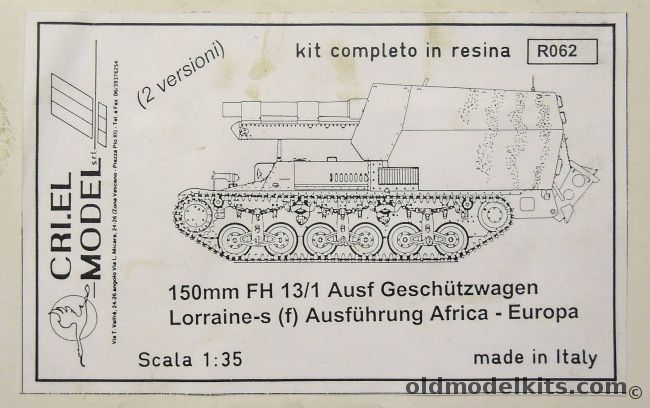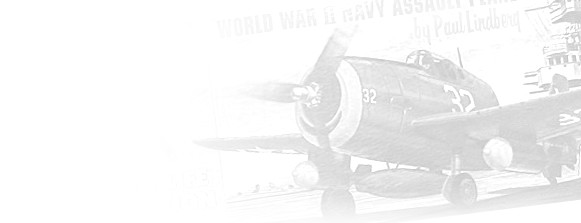
1/35 RO62 Crielmodel 150mm FH 13/1 Ausf Geschutzwagen Lorraine-s (f) Ausfuhrung Africa-Europa - German Self-Propelled Howitzer
Resin Model Kit, Box Condition: VG
This is the only known kit of this subject and an excellent high-definition resin model manufactured in Italy by Massimo Bartoli, otherwise known as Crielmodel. Well detailed model cast in high-definition resin. Never started. The parts are still in the internal factory sealed bags and includes paint guide and instructions. From tanks-encyclopedia.com: There were two main types of self-propelled guns in the German Army during WW2. One was fitted with an anti-tank gun and the other with an artillery howitzer, like the 15cm sFH 13/1 (Sf) auf Geschützwagen Lorraine Schlepper(f) Sd.Kfz.135/1. The vehicle fitted with the artillery howitzer was called a ‘Geschützwagen’, which is literally translated as a ‘gun vehicle’. The letters ‘SF’ stand for ‘Selbstfahrlafette’ – self-propelled carriage. The letter (f) indicates that the chassis was of French origin. Improvised self-propelled artillery guns were developed to enable fast moving attacks to have artillery support that could keep up with the speed of advancing Panzer Divisions. They could use direct fire mode at targets they could see or, more commonly, use indirect fire at targets plotted on a map.They were not designed to be in the front line or engage in combat with tanks. They were motorized artillery guns that could fire high explosive HE shells over the heads of friendly troops. Most targets would have been given to the crew as map grid references by forward observation officers or infantry units under attack.Quite often, the gun crews could not see where their shells landed, as the target was so far away. They would have to rely on the forward observer to tell them if adjustments had to be made.The open-topped back design of these self-propelled guns had a number of advantages. The elevated commander’s position when standing in the crew compartment, behind the protective armored shield, meant that he had a good view on all sides. If there was the threat of enemy small arms fire, then the crew could use a twin lens range finder telescope that could peak over the top of the armored casement.There was enough room for the crew to be transported towards the battlefield whilst protected from small arms fire and shell shrapnel. The vehicle had good mobility and could follow the infantry almost anywhere. The gun was quicker to get ready for action and fire on targets than towed artillery guns.They were cheaper and faster to build than a new vehicle. They used the chassis of an obsolete captured French tank and an existing artillery howitzer.Putting the 15 cm sFH 13/1 howitzer on top of captured French Army Lorraine 37L tracked armored transporter chassis was a more efficient use of manpower than the traditional form of German artillery battery transportation. Even in WW2, horse power was still widely used, although tracked vehicles were also used when available.Each field gun would require a six-horse team to pull the gun and limber. The ammunition, supplies and kit would be kept in the limber, which was a very large box on a pair of wheels with seats on the top. Three men would ride on the left hand horse of each pair to control them. The remaining six men of the gun crew would ride on top of the limber. Only a relative few were towed by the 3 ton halftracks.
This item has been sold.
Click here to return to the main page.
